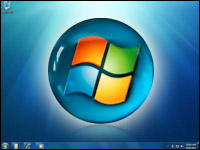
Microsoft’s rollout of Windows 8 represents a new era for operating systems and for Microsoft in general. It also represents the probable end of the Windows desktop OS that most consumers now know, according to a report from Gartner, although the firm expects its demise to be long-unfolding.
“The reality is, the PC market is a mature one, and there will have to be change going forward if we want to get back to a period of growth,” report co-author and Gartner analyst Steve Kleynhans told TechNewsWorld.
What Microsoft is doing with Windows 8 is something of a gamble, though.
“There are a lot of questions as to whether it can pull this off,” noted Kleynhans. “After all, what Microsoft is doing is introducing a whole new programming model that will allow applications to run across a wide variety of devices.”
Whether the market embraces this model as the next phase for application development is a wait-and-see proposition, he said. However, “the status quo was no longer working for Microsoft.”
The Start of the WinRT Era
The introduction of Windows 8 marks the beginning of “the WinRT era,” says the Gartner report, as it combines a new user interface and programming model — Windows Runtime, or WinRT — with legacy Windows NT support. The approach means that users will be able to continue to run their Win32 programs alongside new WinRT apps.
WinRT was also designed to accommodate the increasing shift to mobile computing. The company will push WinRT as a strategic platform for new development, according to Gartner, but that will be a long process. Most users will continue to run Win32 applications for at least another 10 years.
To be sure, Microsoft is facing formidable challenges in making this shift, Kleynhans said. “There is Google with its Android system and Apple with its ecosystem. It is going to be an uphill climb for Microsoft, but it absolutely had to do this because the old Windows environment wasn’t going to cut it forever.”
The clear reality is that consumers and businesses are moving to mobile devices in growing numbers, Kleynhans said, and in some cases are making their mobile devices their primary channel to connect to the Internet.
The problem for Microsoft is that it must continue to maintain backward continuity while pushing forward into this mobile world, he continued.
“People are saying Windows 8 has some rough edges — which it does if it is running on an earlier PC, said Kleynhans. “But that is not what Microsoft is designing Windows 8 for. It is being designed for new hardware and for products with touch interfaces.”
The Decline of the Windows Desktop
Windows Desktop and legacy Windows applications will decline in importance in future Windows client releases, the report projects, especially as the new programming model is meant to lock companies into the next generation of Windows. It predicts that by 2020, enterprise end users will spend less than 10 percent of their time in Win32 applications.
That will be a particularly tricky shift for Microsoft to navigate, as one of its key competitive advantages is its enormous portfolio of Windows applications and its strong developer base.
With the use of Win32 declining and the adoption of WinRT uncertain, could Microsoft’s path be leading to the end of its software dominance?
Not likely, Laura DiDio, principal of ITIC, told TechNewsWorld.
“Clearly we are moving to a mobile world where applications are untethered from a desktop, and Microsoft has certainly recognized this shift is under way,” she said. “But what people don’t recognize is that change happens very slowly in corporations. You don’t just chuck everything into the trash.”
Shifting to a new OS environment requires a plan, a budget, and a long period of transition, said DiDio.
A Microsoft spokesperson was not immediately available to comment for this story.






















































Social Media
See all Social Media